Figuring out this summer’s travel restrictions feels like navigating a labyrinth with no ball of thread. At best, it’s maddening. At worst, it’s simply impossible. The public health situation of every country is fluid, meaning concrete reopening dates are as elusive as airline tickets with no cancellation fees. This is incredibly frustrating for those eager for a much-needed summer vacation. Luckily, some destinations have already reopened their borders to international tourism, or set hard dates for doing so. These are the destinations committed to welcoming back US travelers this summer.
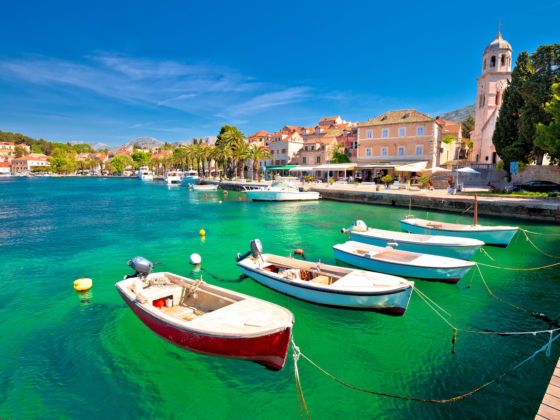

- North America
- Caribbean
- Europe
- Asia
- Central Asia and the Middle East
- Oceania
- Africa
North America
Mexico

Photo: M. Vinuesa/Shutterstock

Photo: M. Vinuesa/Shutterstock
The land border between the United States and Mexico remains closed to nonessential travel until late August, but since air travel is permitted, travelers are still able to enter Mexico. There are no COVID-19 test requirements in place right now, though incoming travelers may be subject to temperature checks and other health screenings at airports. If you show COVID-19 symptoms, you may be asked to quarantine. Each Mexican state has a different policy regarding tourism, with some only open for essential services, and others allowed to operate at reduced capacity. Quintana Roo, for example, which is home to popular destinations like Cancun, Tulum, and Playa del Carmen, is eagerly relaunching its tourism campaign with new health and safety measures for visitors. Before traveling to Mexico, check the rules of the particular state you plan to visit.
Caribbean
US Virgin Islands
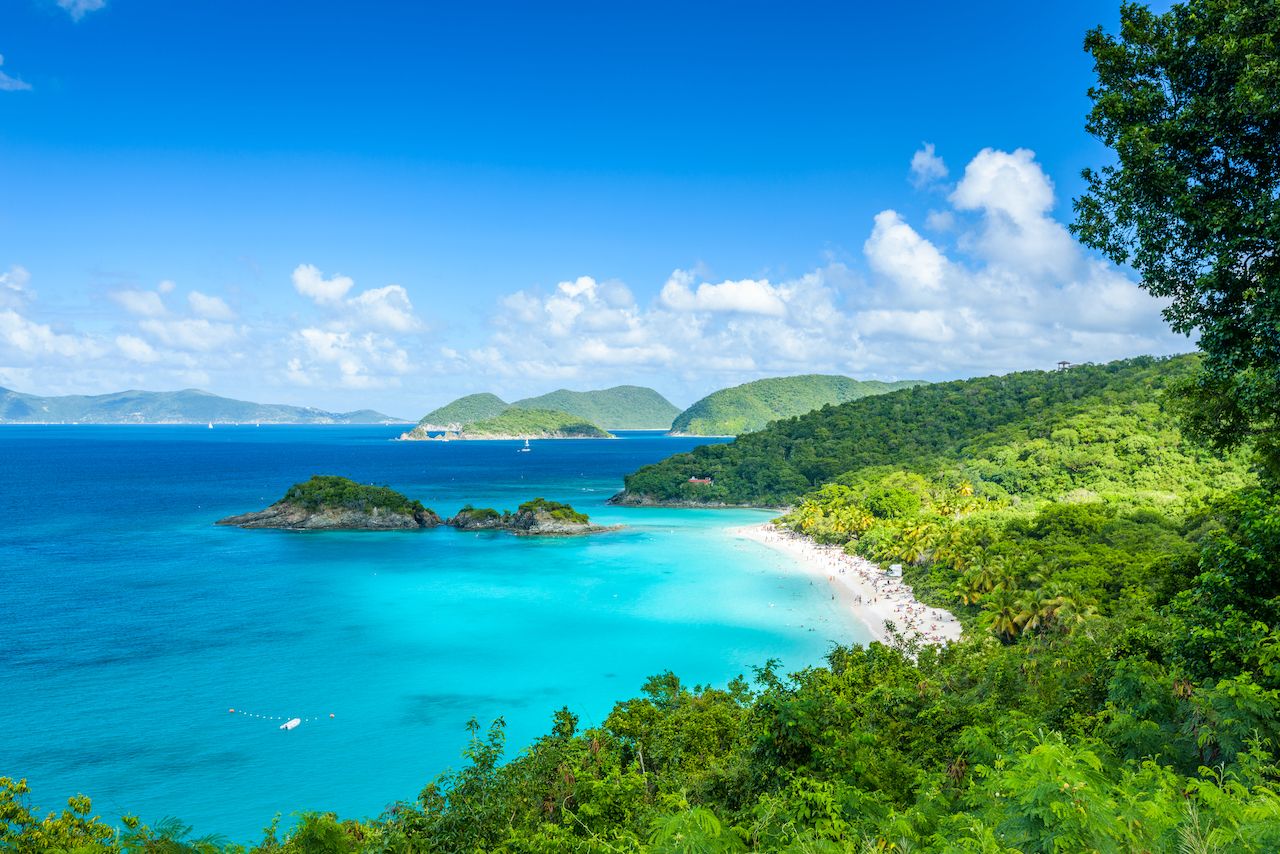
Photo: Sean Pavone/Shutterstock
The US Virgin Islands — including St. Croix, St. John, and St. Thomas — reopened to tourism on June 1. With a relatively low total of reported COVID-19 cases and few deaths, the islands never closed their airports, allowing business travelers, emergency personnel, and USVI residents to continue traveling. As of June 1, airports have been opened to all visitors with no quarantine, as long as they pass a temperature check and health screening upon arrival. Once on the island, visitors must wear face masks inside businesses, social gatherings are restricted to 10 people max, and restaurants will be at 50 percent capacity.
Antigua
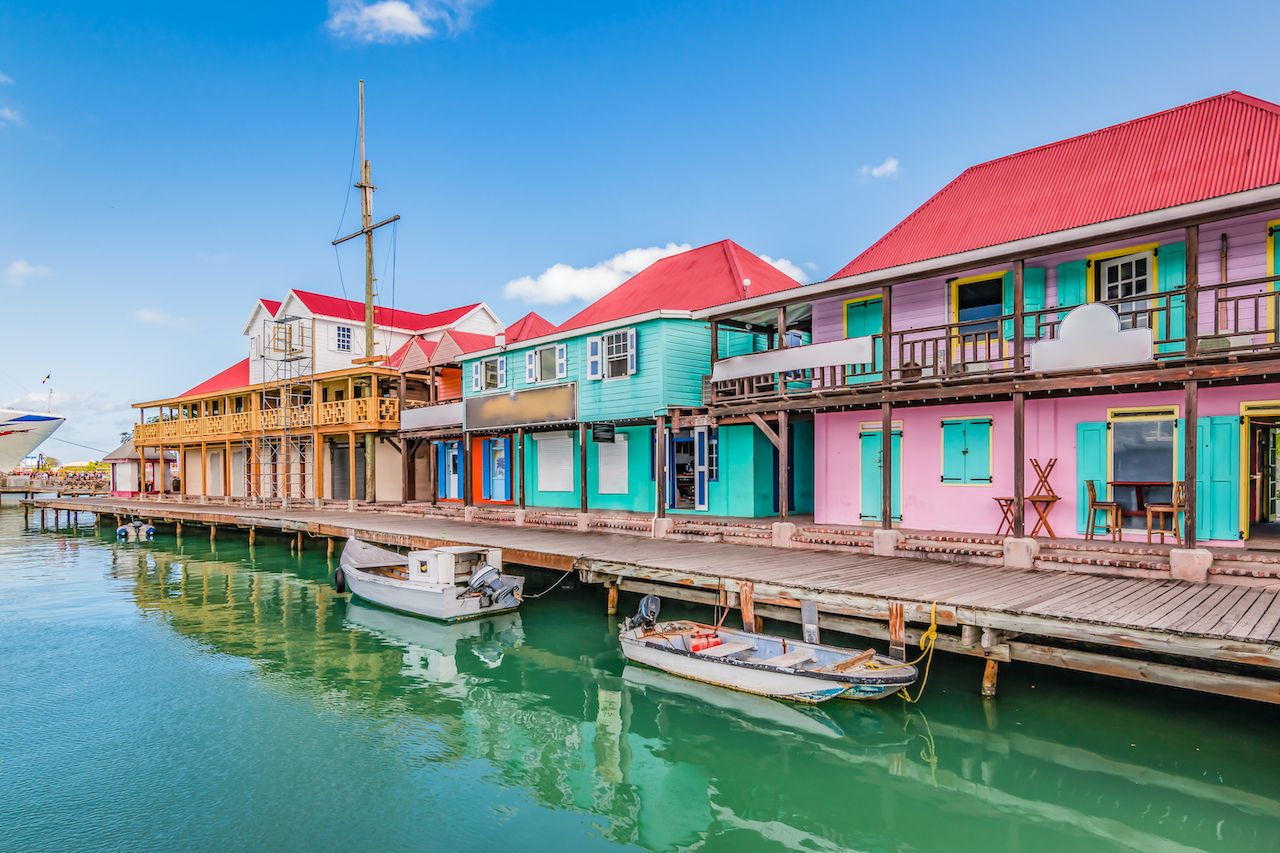
Photo: NAPA/Shutterstock
Antigua has been open to US travelers since June 4. If you’re planning to vacation in Antigua, however, you need to provide proof of a negative COVID-19 test upon arrival, as well as fill out a health declaration form and traveler accommodation form. Health screenings, temperature checks, and antibody tests will be administered at the airport free of charge. Masks are also required in public spaces.
St. Lucia

Photo: PlusONE/Shutterstock
St. Lucia reopened with confidence on June 4, but starting on July 9, the nation’s entry requirement will change. All travelers to St. Lucia are required to fill out a pre-arrival registration form, which can be found online. Incoming visitors must present proof of a negative COVID-19 test taken within seven days of arrival, unless they’re coming from a “travel bubble country” (Antigua, Barbuda, Aruba, Anguilla, the Bahamas, Barbados, Bermuda, Bonaire, the British Virgin Islands, Curacao, Dominica, Grenada, Guyana, Jamaica, Montserrat, St. Barts, St. Kitts and Nevis, St. Martin, St. Vincent and the Grenadines, Trinidad and Tobago, and Turks and Caicos). Incoming visitors must also have confirmed reservations at a COVID-19 certified accommodation provider for the duration of their stay. To date, hotels that have received COVID-19 certification include the Bay Gardens Beach Resort & Spa, Sandals Grande St. Lucian, and Stonefield Villa Resort. Several other hotels and resorts are on track to receive certification later in July.
St. Vincent and the Grenadines
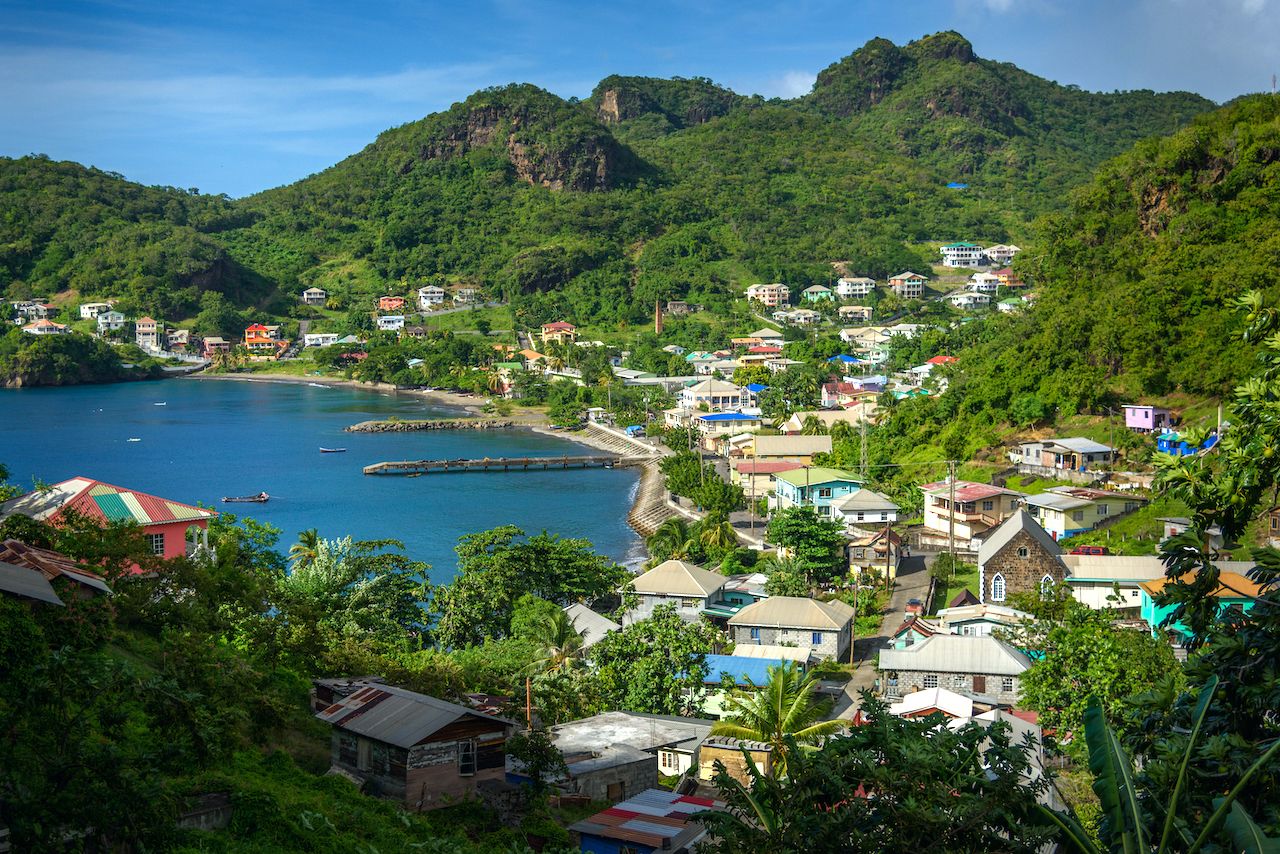
Photo: mbrand85/Shutterstock
St. Vincent and the Grenadines is requiring a COVID-19 test for all travelers coming to the island. The test must have been taken within 48 hours of arrival. A negative antibody test, taken within five days, is also permissible. If you don’t have a negative test result upon entry, you will be required to take a test at the airport and quarantine for 24 hours while you await your results. Once cleared for entry, travelers are expected to monitor their temperatures for two weeks and report any changes to authorities.
Jamaica
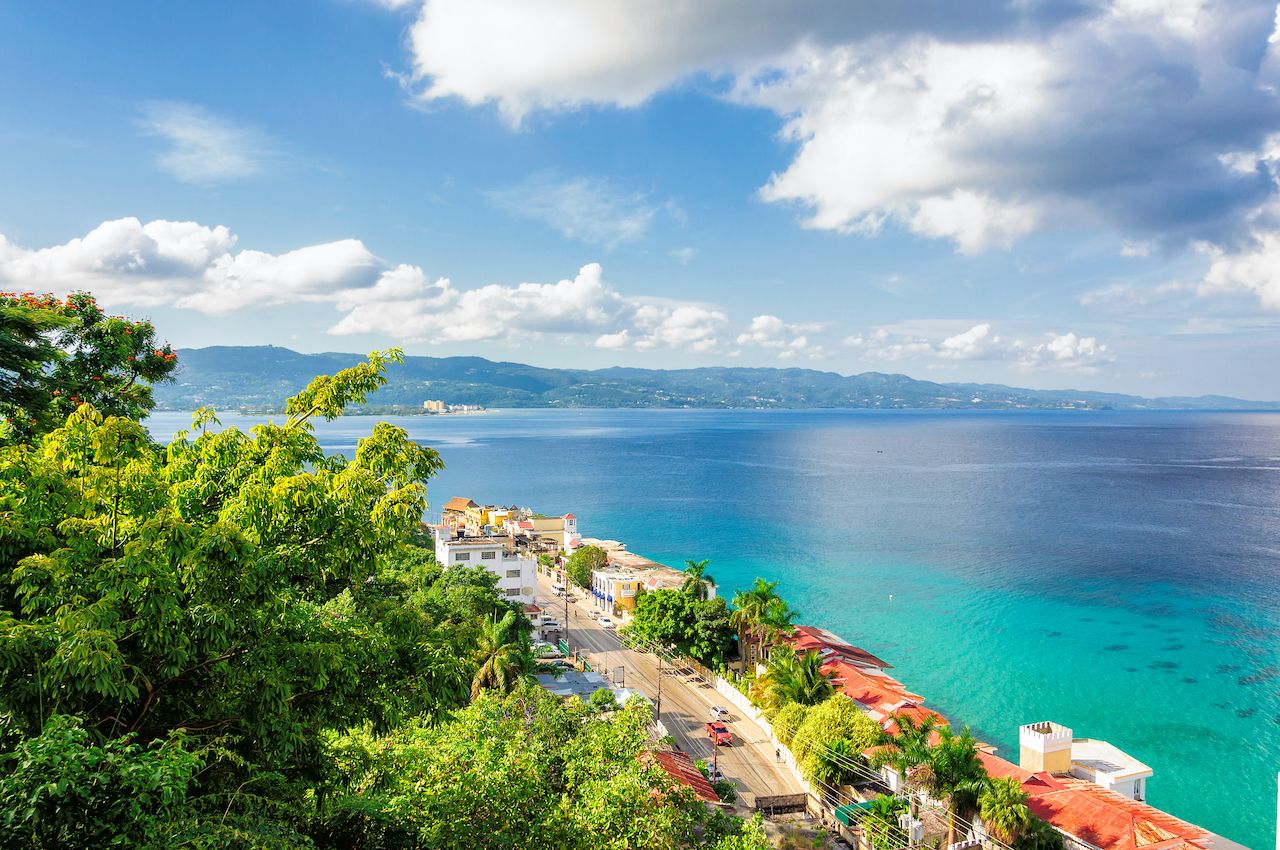
Photo: Lucky-photographer/Shutterstock
On June 15, Jamaica began welcoming international tourists once again and American, Delta, and United airlines have all resumed operations from the US. For residents of most states, a negative COVID-19 test is not a requirement for entry into Jamaica. However, if you’re from Arizona, Florida, New York, or Texas, you will have to show proof of a negative test — taken within seven days of arrival — starting on July 10. Temperatures will be checked at the airport, and if you do have a temperature, a test will be administered and you will be asked to self-quarantine at your hotel until the test results are available. Face masks are required at hotels, beaches, and on public transportation. Many resorts have already reopened, though some will not resume operations until the end of July.
St. Barts

Photo: NAPA/Shutterstock
St. Barts reopened its airport to all international travelers on June 22, provided they have proof of a negative COVID-19 test taken within 72 hours of arrival. If you can’t get tested before arrival, you’re required to be tested at the airport, and then quarantine at your hotel for 24 hours until the results are available. If you plan on remaining in St. Barts for longer than seven nights, you will have to undergo a second test on the seventh day of your trip. In the event that you do test positive, you will be asked to quarantine for 14 nights. On June 22, Tradewind Aviation will resume shuttle flights between San Juan Airport in Puerto Rico and St. Barts, and several airlines are running routes from the US to San Juan.
Bermuda
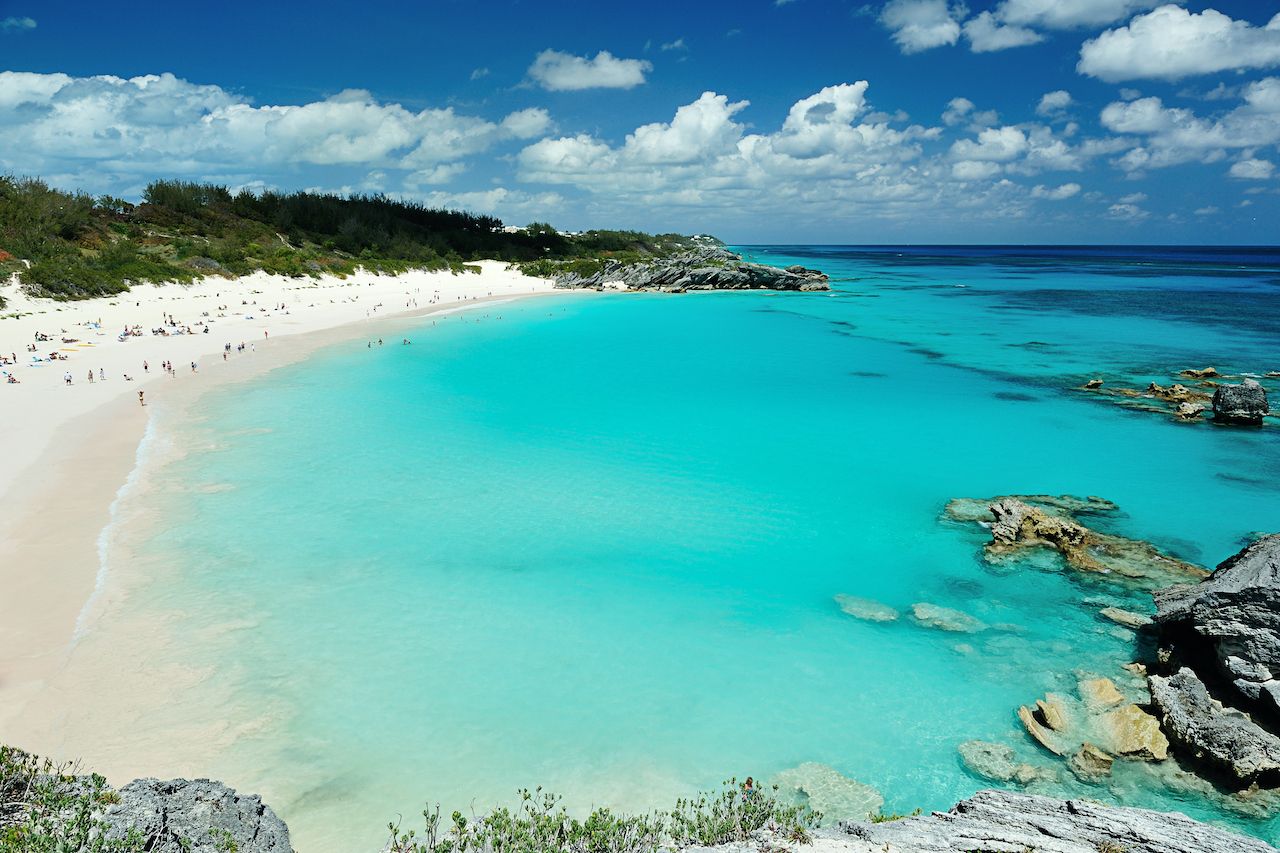
Photo: PixieMe/Shutterstock
Bermuda is opening up to international travelers on July 1, with a set of safety measures. Within 48 hours of departure, visitors must complete the Bermuda travel authorization process online. The process costs $75, and that includes the cost of all COVID-19 testing in Bermuda. Prior to your departure, you should take a COVID-19 test and be prepared to show proof of your negative result, and acquire health insurance that covers any coronavirus-related illness. Even if you do have a negative test result, you will be required to take another test at the airport, and wait between four and eight hours for the results. Once on the island, you will be required to take yet another test on days three, seven, and 14 at pop-up testing centers around the island, in addition to taking your own temperature twice a day and reporting the results via an online portal.
St. Martin
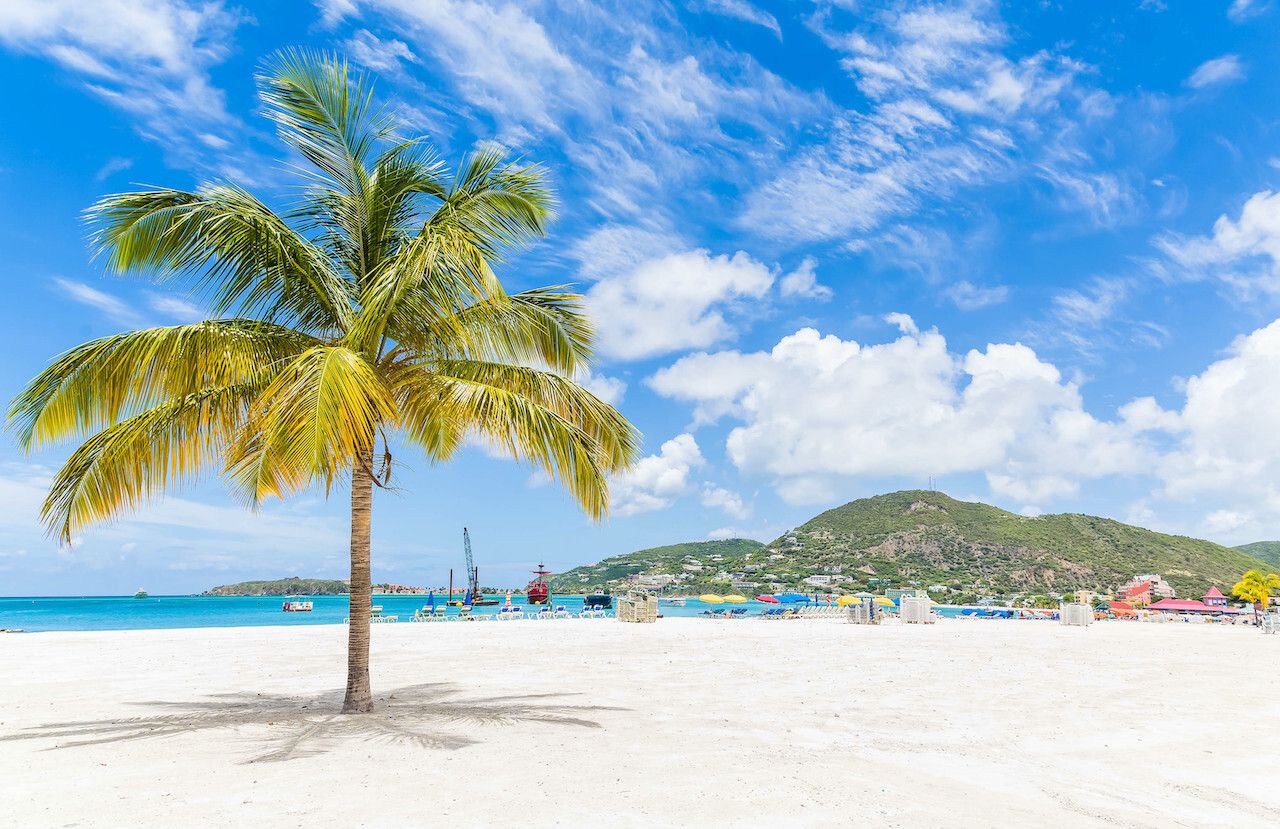
Photo: Darryl Brooks/Shutterstock
St. Martin is reopening to US travelers on July 1, with protocols similar to many other Caribbean destinations. All travelers will be required to show proof of a negative COVID-19 test (taken within 72 hours) upon arrival, as well as undergo mandatory temperature checks. Anyone with a fever or exhibiting symptoms could be subject to an additional test at their own expense. Spirit, JetBlue, and American airlines are all resuming flights to St. Martin in July, and resorts across the island will be reopening on a rolling basis throughout the summer.
Bahamas

Photo: Stefan Ugljevarevic/Shutterstock
Editor’s Note: On July 19, the Bahamas announced that it will be rolling back some of its reopening measures in response to increased COVID-19 cases in the US, as well as in the Bahamas. Its borders will be closed to international commercial flights and ships carrying passengers from the US as early as Wednesday, July 22. Bahamasair has also canceled all outgoing flights to the US. This article will be updated as new information becomes available. In the meantime, we’re leaving the previously published text as is.
The Bahamas has been slowly reopening businesses since May, and international travel is expected to resume on July 1. Phase one of the Bahamas’ new health protocol began on June 15, and allowed those with private jets, yachts, and boats to enter the islands. Commercial airlines also started resuming flights for Bahamian citizens, legal residents, and immediate family members of residents.
Phase two begins on July 1, with commercial airlines available for leisure travelers. Southwest and American airlines have announced the resumption of their routes to The Bahamas in early July. All travelers to The Bahamas are required to fill in an Electronic Health Visa online and upload a negative RT PCR COVID-19 test before departure. Travelers who are approved must print off their confirmations, along with their negative test results, for inspection upon arrival. Those arriving in The Bahamas between July 1 and July 6 must present results no more than 10 days old while those arriving in The Bahamas from July 7 must present results no more than seven days old.
Dominican Republic

Photo: Solarisys/Shutterstock
The Dominican Republic will fully reopen to tourists on July 1, as part of phase four of the country’s reopening plan. Hotels, airports, gyms, and restaurants will all open at the start of July, in an effort to keep pace with its Caribbean neighbors. JetBlue and Air Transit will resume service from July 1, with other airlines like Air Canada and Frontier to follow. Half the country’s hotels are expected to open in July, while the remaining properties will open by November. Details about airport procedures remain a bit vague, but incoming passengers should expect temperature checks and other heightened precautions, potentially including a COVID-19 test.
Aruba
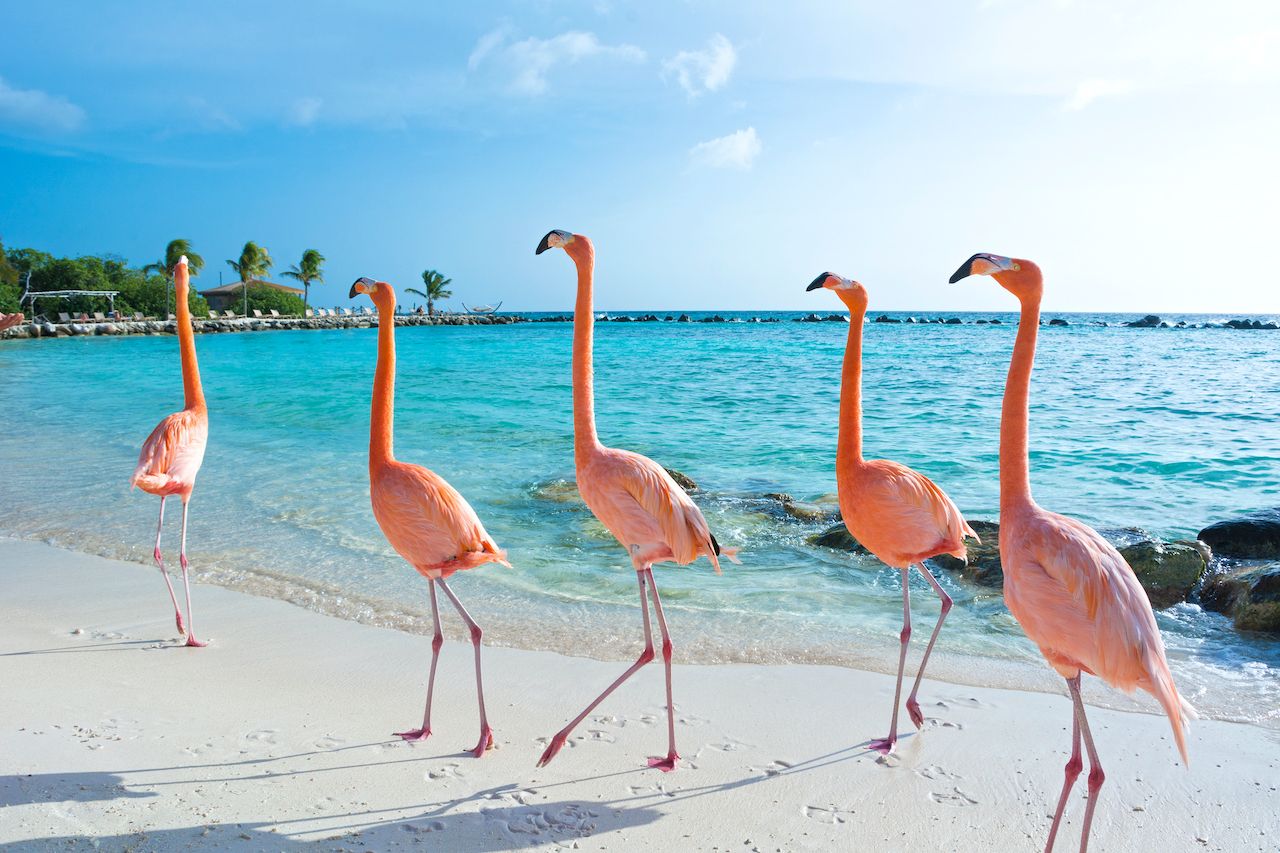
Photo: Natalia Barsukova/Shutterstock
Although Aruba has already reopened to visitors from nearby Bonaire and Curaçao, US travelers won’t be allowed in until July 10. Airlines have started announcing their flight schedules from various US cities to Aruba, and the list can be viewed online. All hotels, national parks, and tourism attractions in Aruba are required to abide by new safety protocols, and those that do have a certification seal.
Visitors will be expected to complete an embarkation/disembarkation card prior to arrival, show a negative COVID-19 test taken within 72 hours of arrival (or opt to pay for a test at the airport and quarantine for 24 hours), and have health insurance that covers COVID-19. The detailed list of requirements is available on Aruba’s official website.
Barbados

Photo: Simon Dannhauer/Shutterstock
Having registered over 35 consecutive days without a new COVID-19 case, Barbados will reopen to international tourists on July 12. Flights to the island will resume mid-July from Air Canada, British Airways, Caribbean Airlines, and JetBlue. Visitors from high-risk countries (countries with more than 10,000 new cases in the past seven days and community transmission) will need to take a test 72 hours prior to their departure, while those from low-risk countries (countries with less than 100 new cases in the past seven days and not in the Community Transmission Category) can take a test up to one week prior to their departure. Anyone without a negative test will be required to take one upon arrival and quarantine for 48 hours at their own expense while test results are processed.
Puerto Rico
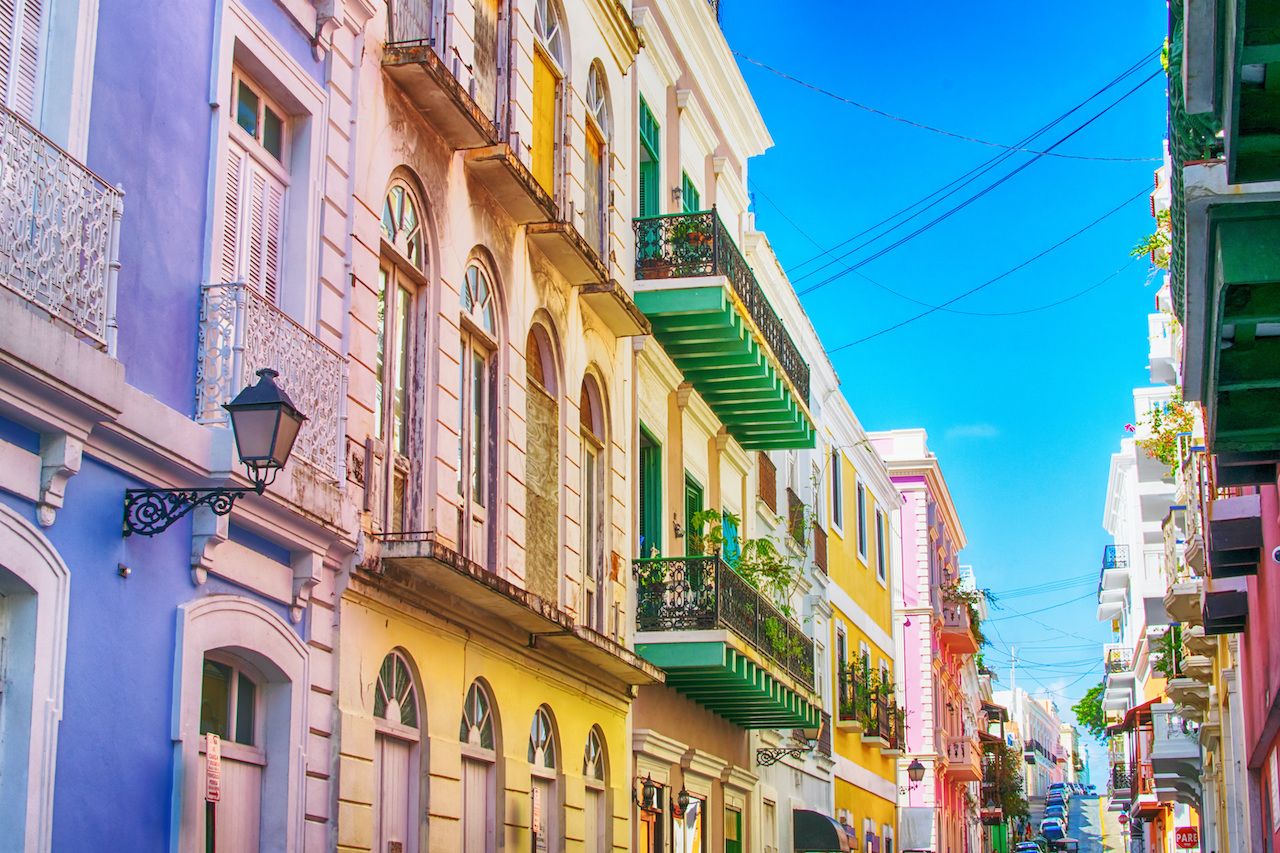
Photo: fldlcc/Shutterstock
Editor’s Note: On July 16, Puerto Rico announced that it will be rolling back some of its re-opening measures in response to a spike in COVID-19 cases and hospitalizations. Bars, movie theaters, and casinos will be re-closed; sunbathing will not be allowed on beaches; and restaurants will return to 50 percent capacity. If you’ve already booked your Puerto Rico trip, however, you will still be allowed to enter the island — just expect a more limited experience. The details of Puerto Rico’s reopening are subject to the fluid global health crisis and liable to change on a daily basis. This article will be updated as new information becomes available. In the meantime, we are leaving the previously published text as is.
Puerto Rico is set to welcome back international tourists starting July 15. Upon arrival, visitors will be required to show proof of a negative COVID-19 PCR test, or undergo rapid testing at the airport and enter a mandatory 14-day quarantine (whether the results are positive or negative.) Travelers must also complete a travel declaration form from the Puerto Rico Health Department prior to arriving. Before restarting operations, all tourism businesses are required to comply with a strict set of hygiene regulations, with restaurants at 75 percent capacity and temperature checks required at the door. Until July 22, there will also be a curfew in place for everyone except essential workers, mandating that people stay indoors between 10:00 PM and 5:00 AM.
Turks and Caicos

Photo: TravnikovStudio/Shutterstock
Starting on July 22, Turks and Caicos plans to reopen its borders to international tourism. On that date, American, United, and JetBlue will resume flights from Miami, Charlotte, and New York, with more flights to follow in the next few weeks. Passengers must be pre-certified by TCI Assured, a quality assurance portal that will be available through Turks and Caicos’ official tourism website, and present their certification upon arrival. To obtain the certification — and the sticker that comes with it — you must provide proof of a negative COVID-19 test taken within 72 hours of arrival. No quarantine period will be required for those with negative test results.
Belize
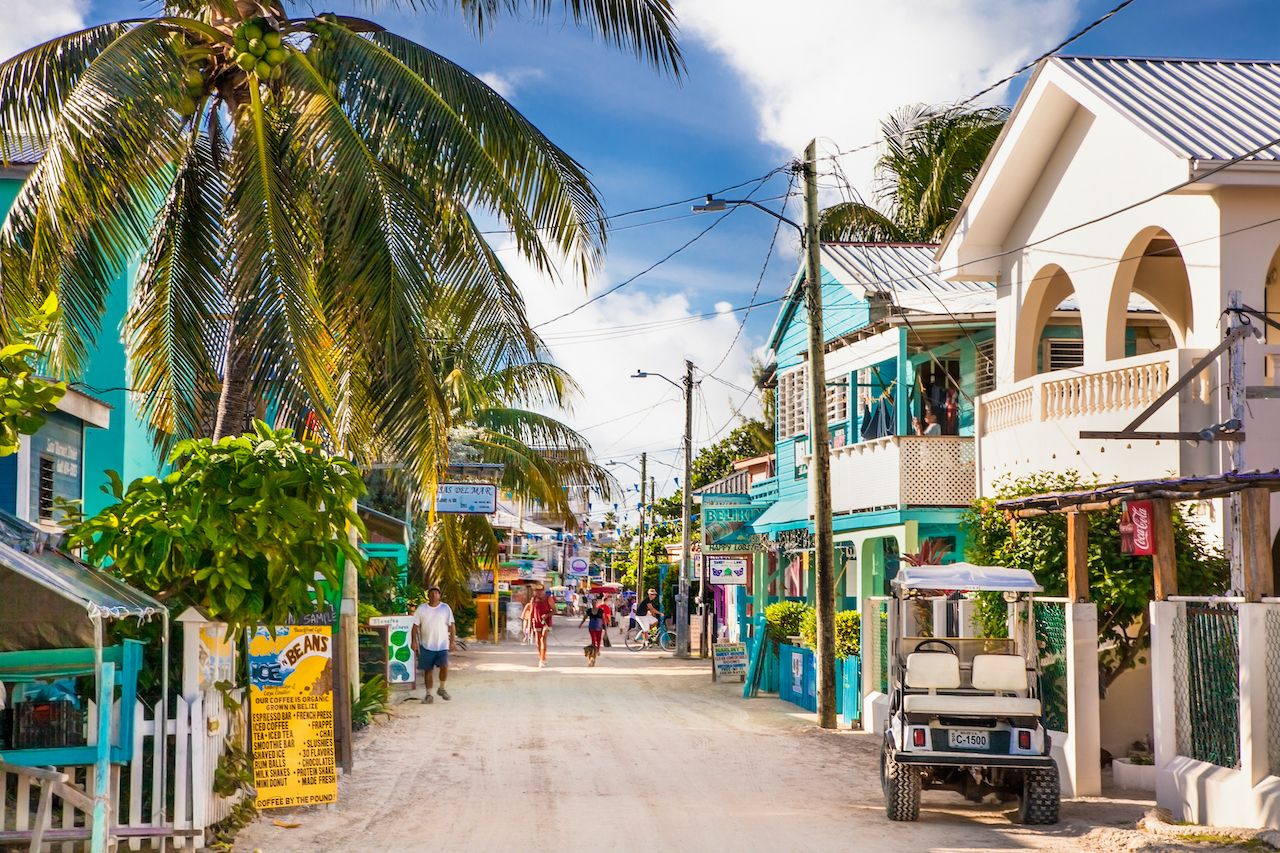
Photo: Aleksandar Todorovic/Shutterstock
Despite rising cases in the United States, and growing concern over the virus’ spread, Belize has officially announced an August 15 reopening date for US tourists, with United, American, Delta, and Avianca all resuming service. Visitors will, however, be greeted by an array of new safety precautions. Travelers can only book a pre-approved accommodation, must show the results of a negative COVID-19 test upon arrival, and download the Belize health app that tracks user movement throughout the country.
Dominica

Photo: Hello Bipo/Shutterstock
The island of Dominica, has announced that it will be reopening to international tourists on August 7. All travelers arriving to the island will be expected to show evidence of a negative COVID-19 test, recorded 24 to 72 hours before arrival, and complete an online questionnaire at least 24 hours in advance. Upon arrival, you can expect to undergo several health checks, including a rapid test screening. If you do test positive or show signs of illness, you have to take a PCR test and will need to quarantine at a government-approved facility or government-certified hotel at your own expense while waiting for the results.
Europe
Croatia
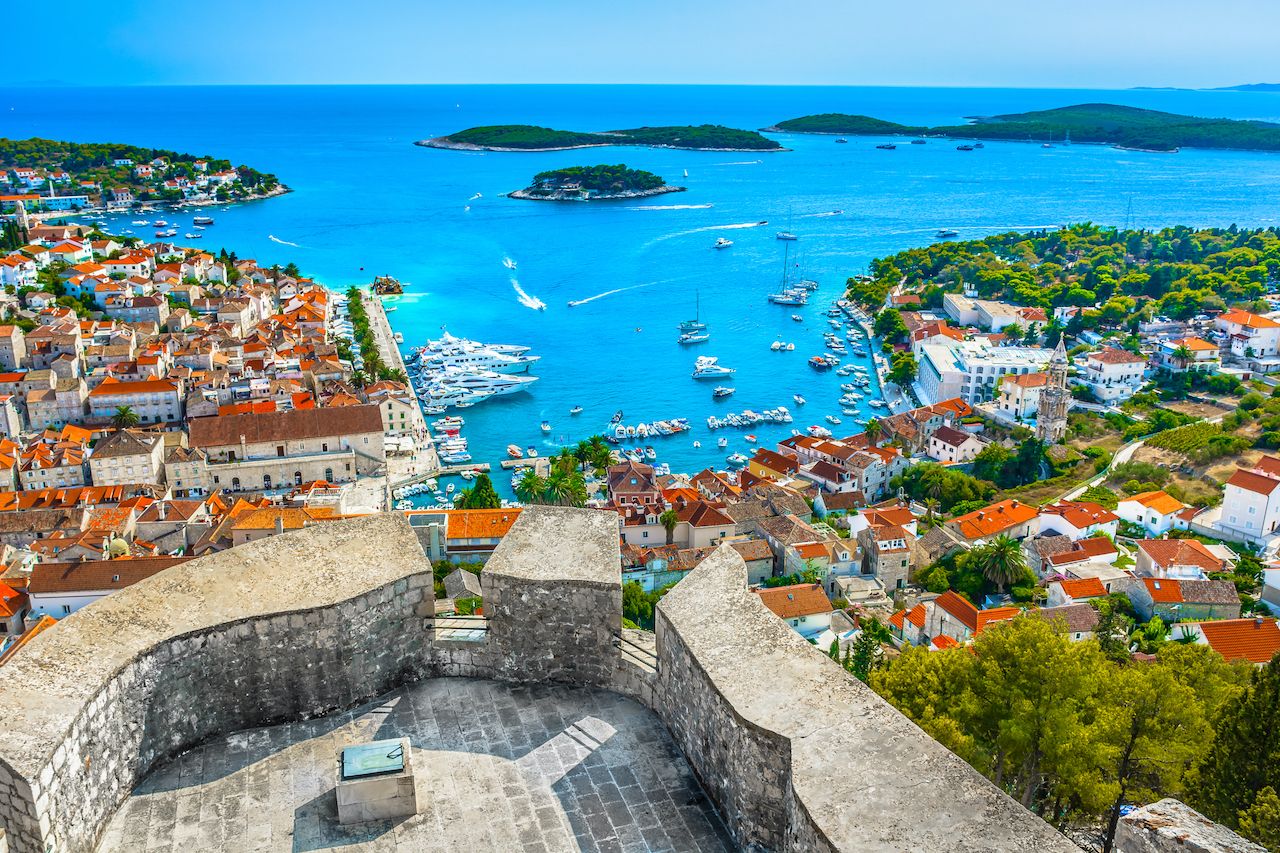
Photo: Dreamer4787/Shutterstock
Although the European Union decided to temporarily close its external borders to US travelers, member nations are allowed to choose whether or not they want to adhere to rules at their own risk, and that’s exactly what Croatia is doing. Starting on July 1, Croatia became the first European country to welcome US tourists. No negative COVID-19 test is required for entry, and travelers will not be asked to quarantine. If you’re planning to travel to Croatia, all you need to do is fill out an online registration form with some personal information, as well as a disclosure of whether you’ve been recently exposed to COVID-19. Upon arrival, you’ll also be asked to show proof that you’ve booked accommodation.
North Macedonia
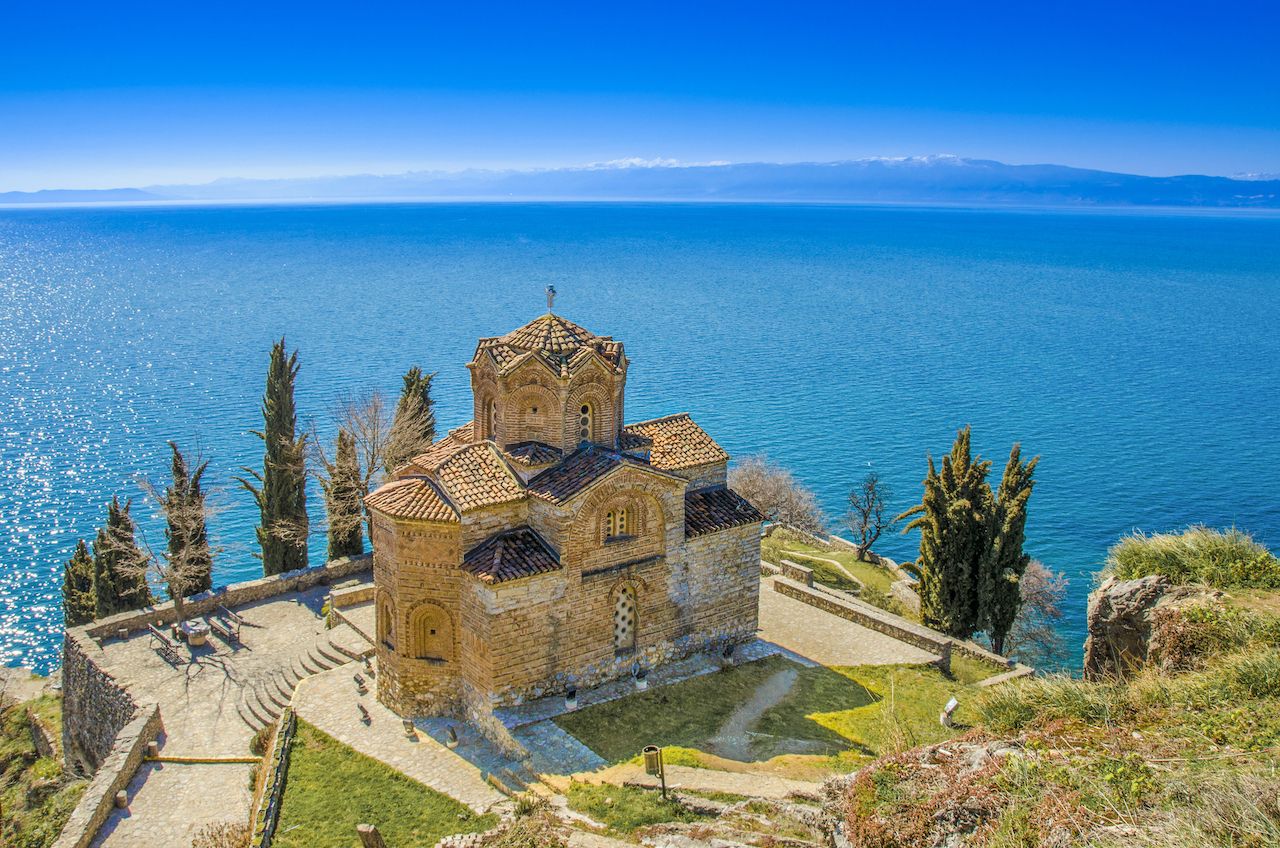
Photo: Pargovski Jove/Shutterstock
North Macedonia is one of the most relaxed countries when it comes to tourism in the age of the novel coronavirus. The Balkan nation doesn’t require any COVID-19 test or quarantine upon entry. Once you’re in the country, however, expect to wear masks in closed public spaces. Also keep in mind that groups larger than two people are prohibited in public spaces, with the exception of children under 14.
Serbia
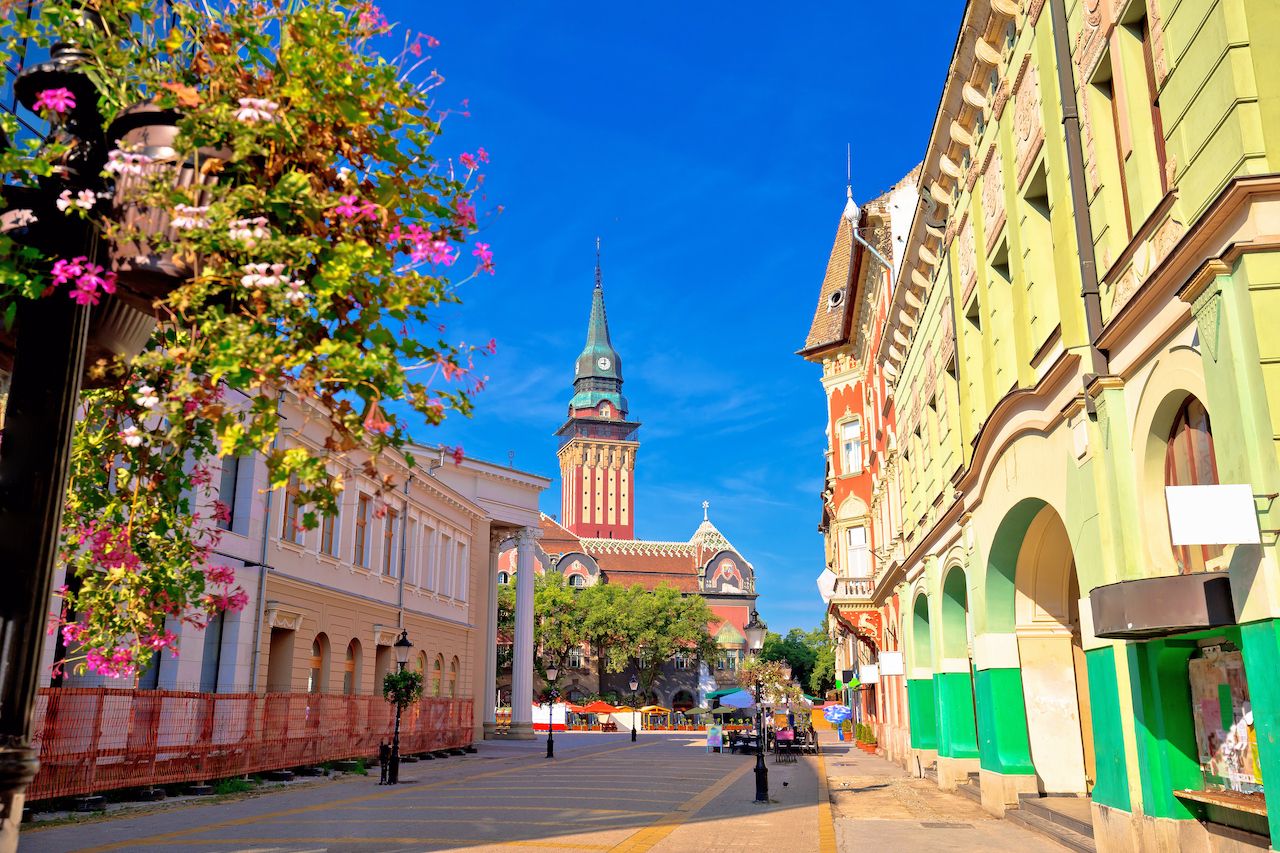
Photo: xbrchx/Shutterstock
Like North Macedonia, Serbia is yet another Balkan nation that’s pretty straightforward to visit right now. All COVID-19-related restrictions have been lifted for Serbia, but a recent increase in cases there has prompted a state of emergency and an overwhelming hospital capacity. Masks are mandatory in public transportation and all indoor spaces.
Kosovo
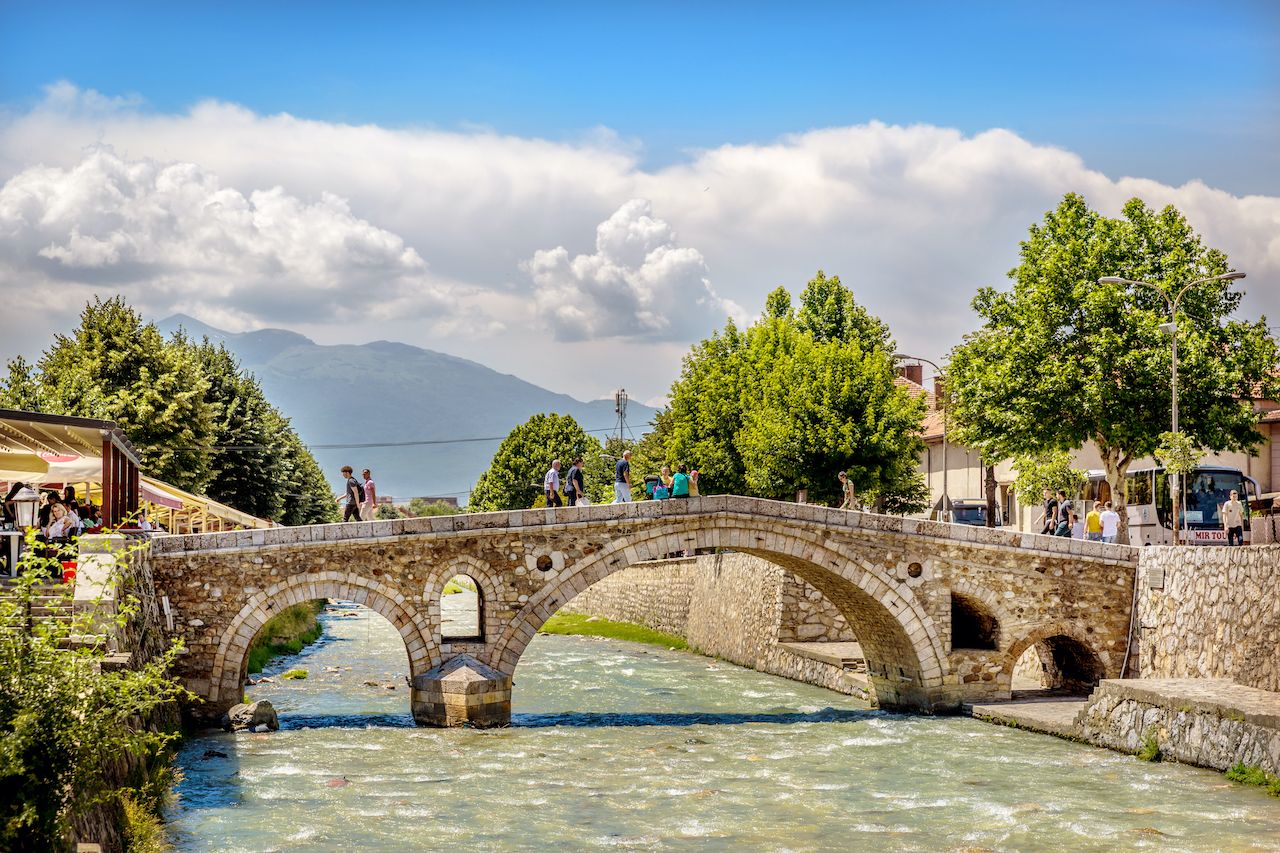
Photo: LMspencer/Shutterstock
There are no COVID-19 restrictions upon entering Kosovo, though it is being recommended that travelers take a test within four days of arrival and can show the negative results.
Asia
Maldives

Photo: Lifestyle Travel Photo/Shutterstock
Starting on July 15, the Maldives will welcome international travelers to the resorts, marinas, and hotels on its uninhabited islands. You’ll have to fill out a health card and make frequent use of a mask, but you won’t have to show a negative COVID-19 test or quarantine for any length of time. If you’re experiencing any COVID-19 symptoms, however, you will be expected to take a test at your own expense. It’s also important to keep in mind that accommodation must be booked in advance at a government-registered property, and you won’t be allowed to hop between different hotels during your stay. To visit inhabited islands, you’ll have to wait until August 1, when hotels and resorts reopen.
Sri Lanka
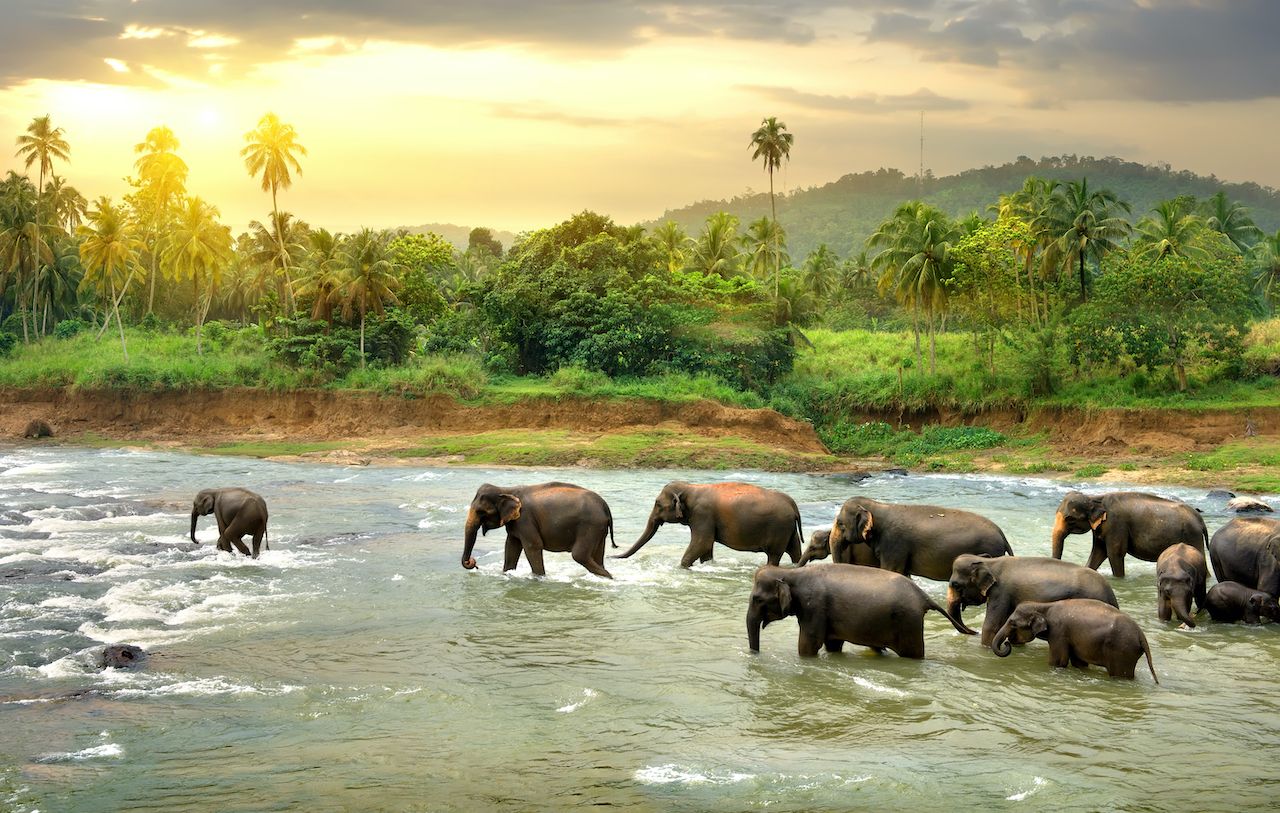
Photo: givaga/Shutterstock
Sri Lanka will reopen to tourists on August 1, but don’t expect to slip through without a COVID-19 test. Sri Lanka requires four COVID-19 tests throughout the duration of your stay. The first should be taken within 72 hours of your departure to Sri Lanka, and the second administered at the airport, free of charge, though you will have to quarantine for 24 hours while waiting for the results. The third test must be taken four to five days after your arrival via a mobile unit, and if you’re staying for 10 or more days, you’ll have to take yet another test on the 10th day. If you test positive at any point, you will be required to quarantine for 14 to 21 days. Also keep in mind that a tourist visa will cost $100 (it was previously free), and you must provide your itinerary, proof of medical insurance, booking details, and return ticket information in your visa application.
Cambodia

Photo: karinkamon/Shutterstock
Cambodia is open to international travel, but restrictions and guidelines abound. All incoming travelers must have medical insurance policies covering a minimum of $50,000, take a COVID-19 test at the airport, and quarantine for a night while you wait for the results. If anyone on your flight tests positive, however, you will be forced to quarantine for two weeks. What really sets Cambodia apart is the $3,000 “coronavirus deposit” required upon arrival, to cover any potential medical expenses. The deposit will be refunded to you — minus the cost of airport testing — if you test negative.
Central Asia and the Middle East
Turkey
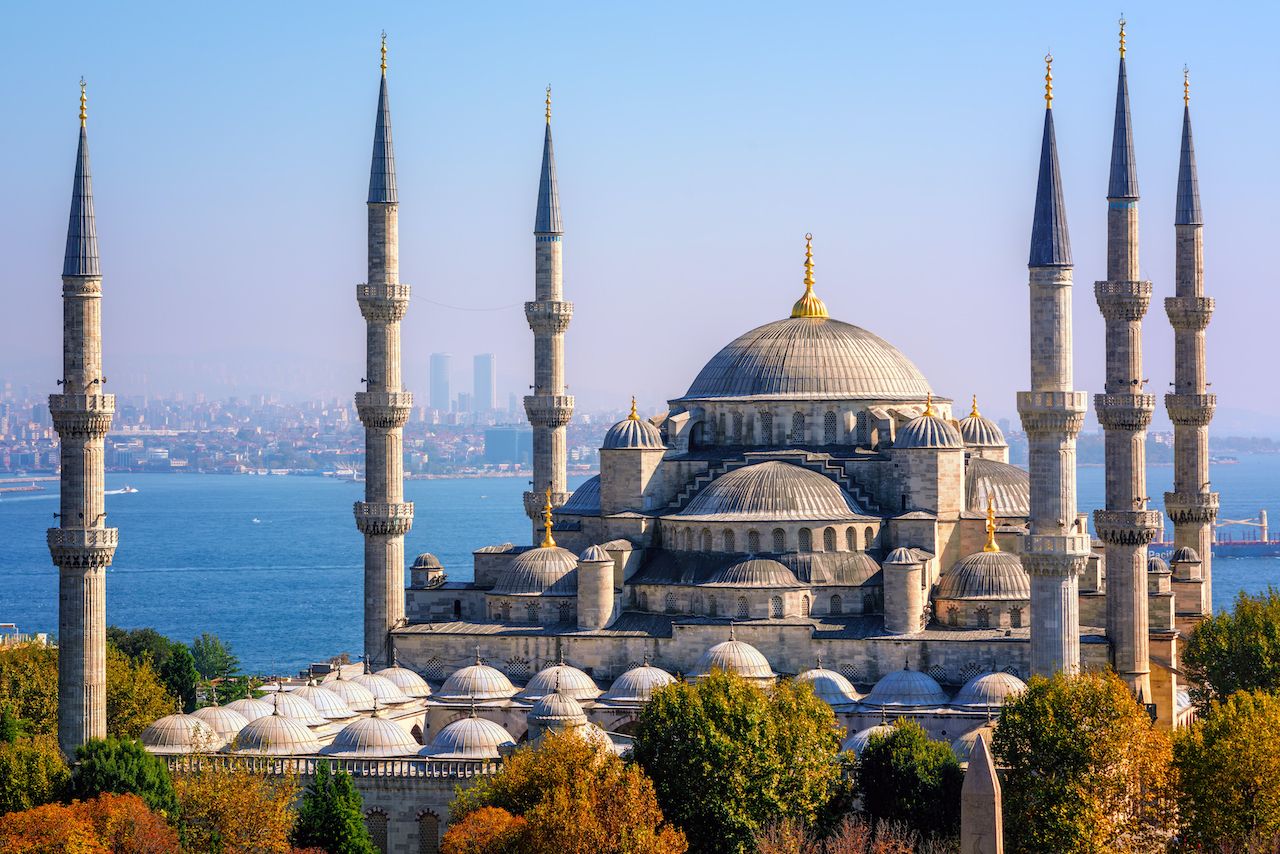
Photo: Boris Stroujko/Shutterstock
Visitors to Turkey will not be required to take a COVID-19 test but will be subject to temperature checks upon arrival. If you register an elevated temperature, you will be given a COVID-19 test, and testing positive will result in a mandatory hospital visit and potential quarantine. Face masks are required in all public spaces, and those under 18 years-old can only go out in public accompanied by a parent. Similarly, anyone 65 and older can only leave the house between 10:00 AM and 8:00 PM.
Dubai
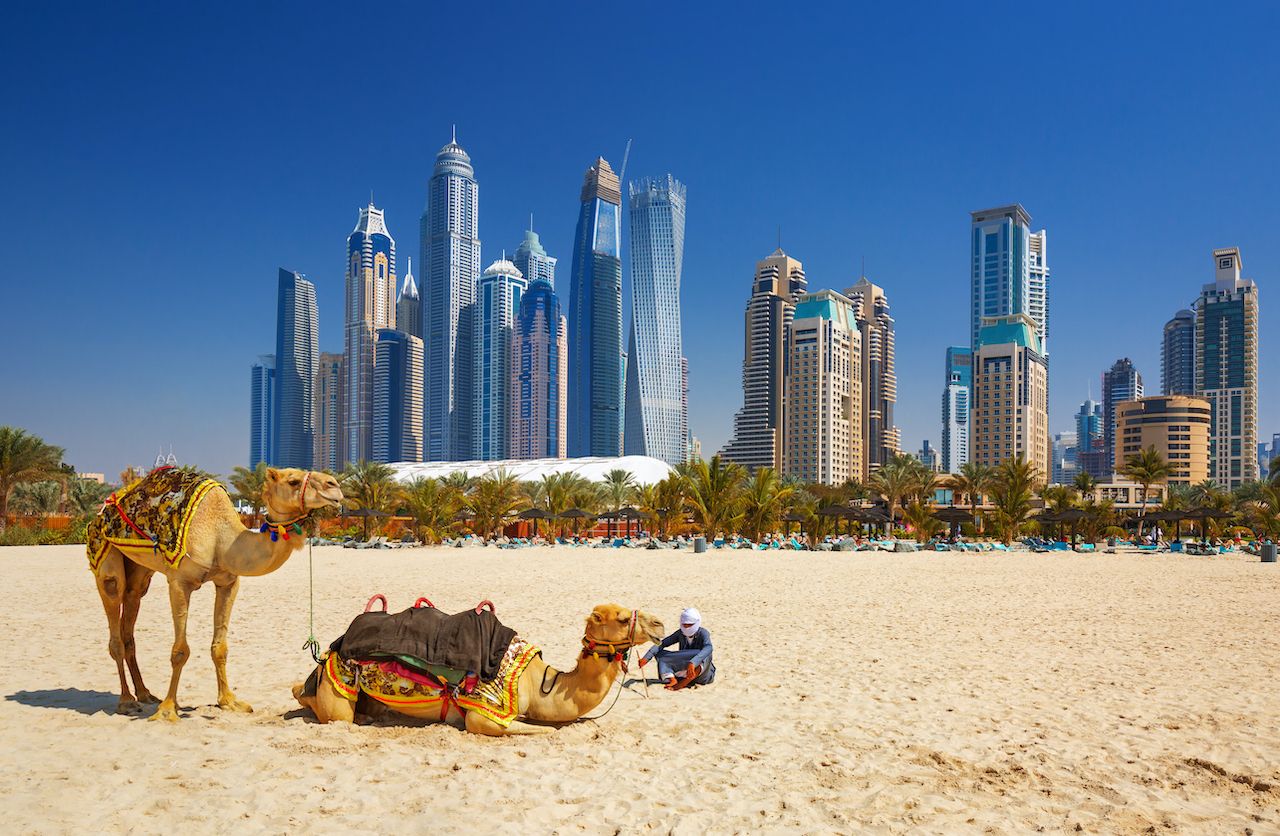
Photo: Rasto SK/Shutterstock
On July 7, the United Arab Emirates’ most popular destination will finally reopen to international visitors. To enter Dubai, however, you must have health insurance that covers COVID-19, and show proof that you recently tested negative for the virus. You can also take a test at Dubai’s airport. If you test positive, you will be expected to undergo a 14-day quarantine at your own expense.
Uzbekistan

Photo: monticello/Shutterstock
Uzbekistan is among the world’s most confident countries when it comes to reopening to international travelers. Already open for tourism, Uzbekistan is truly backing up its safety claims by offering visitors a financial incentive to visit. If tourists become infected with COVID-19 while visiting Uzbekistan, the government will pay up to $3,000 in compensation for any medical expenses. The country’s hotels are implementing strict new hygiene measures, and must meet certain standards of health and safety. To be eligible for the $3,000, however, you must visit through a group tour organized by a local operator.
Lebanon
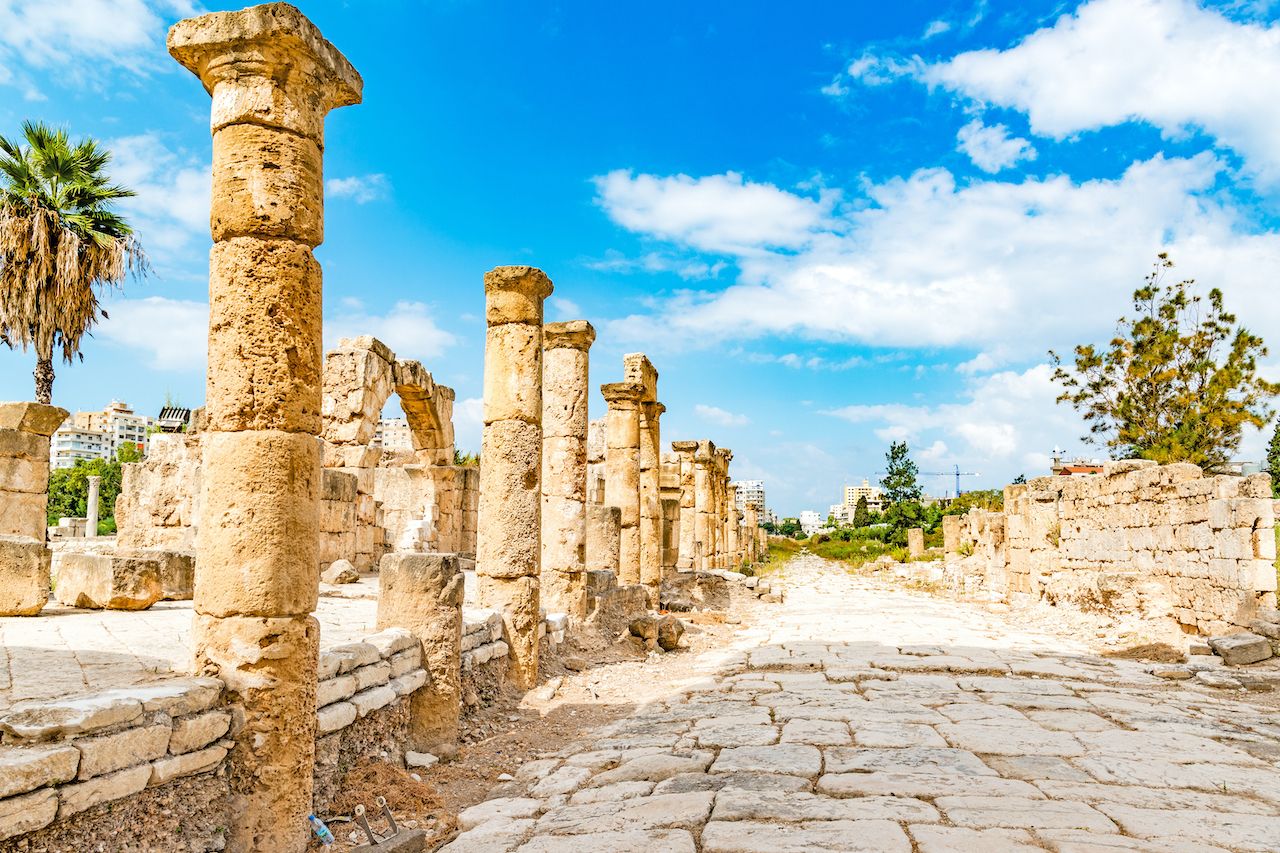
Photo: Hamdan Yoshida/Shutterstock
To travel to Lebanon, you must show the results of a negative COVID-19 test taken within four days of arrival. If you plan to stay for over a week, you’ll be required to take another test, administered at the airport and at the airline’s expense. Arriving without a negative test result means you will be tested at the airport and then retested again 72 hours later. While awaiting the results, you will be required to quarantine. You should also be prepared to show proof that your insurance covers any costs associated with COVID-19 illness.
Oceania
French Polynesia
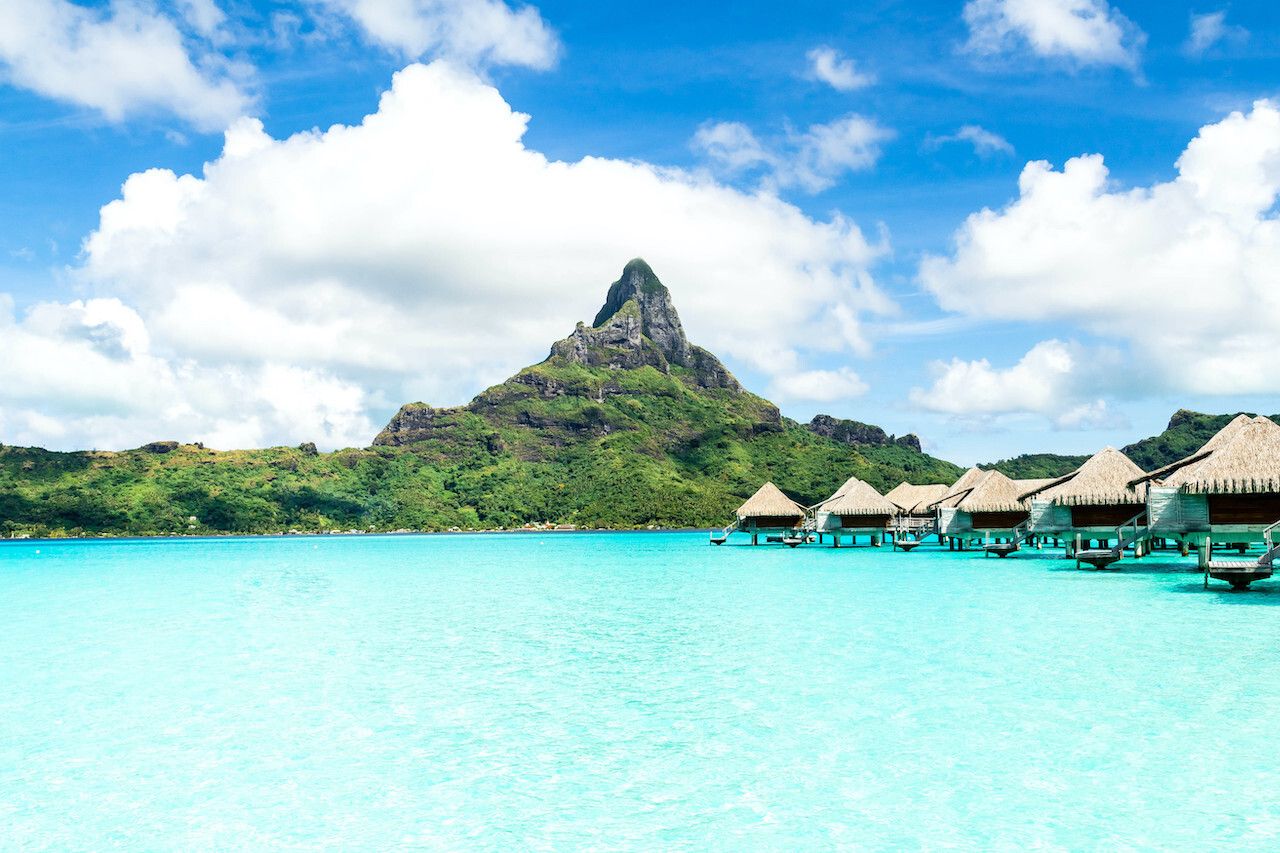
Photo: Marcelo Alex/Shutterstock
French Polynesia, including the islands of Tahiti and Bora Bora, is planning to reopen to all international tourists starting on July 15. Before boarding your flight, however, you must show proof of a negative COVID-19 test taken within the previous 72 hours. You must also complete an electronic entry form attesting that you have travel insurance that covers any potential COVID-19 expenses or agree to cover all costs yourself.
Africa
Zanzibar

Photo: Spirit of a Jewel/Shutterstock
Your tropical summer getaway doesn’t necessarily have to be in the Caribbean. Zanzibar, the small tropical island off the coast of mainland Tanzania, is open to tourism, and you won’t even have to take a COVID-19 test or quarantine. In early June, Zanzibar’s Minister of Information, Tourism, and Heritage Mahmoud Thabit Kombo said, “Zanzibar today has opened its tourism activities to normal both for charter flights and scheduled flights. All tourist hotels, restaurants and bars in Zanzibar are open from today.”
Travelers arriving to Zanzibar must have medical health insurance and have to undergo screenings at entry points. Those with symptoms of COVID-19 will be sent to designated isolation centers for more extensive testing.
Tanzania

Photo: Manamana/Shutterstock
Since June, Tanzania has been welcoming tourists under pre-COVID border rules. Temperature checks, masks, and social distancing are required at the airport upon arrival, but there is no COVID-19 test or mandatory quarantine period. Incoming tourists will also be asked to fill out a health questionnaire. If you’re showing any symptoms of COVID-19, or have a high temperature, you may be subject to a COVID-19 test.
According to the US Embassy in Tanzania, “The Government of Tanzania lifted the suspension on international flights to Tanzania and several airlines have scheduled international flights beginning June 2020.”
While 68 countries can visit Tanzania visa-free, US citizens must obtain their visa at the airport or in advance, for a fee of $100.
A version of this article was previously published on June 30, 2020, and was updated on July 23, 2020, with more information.